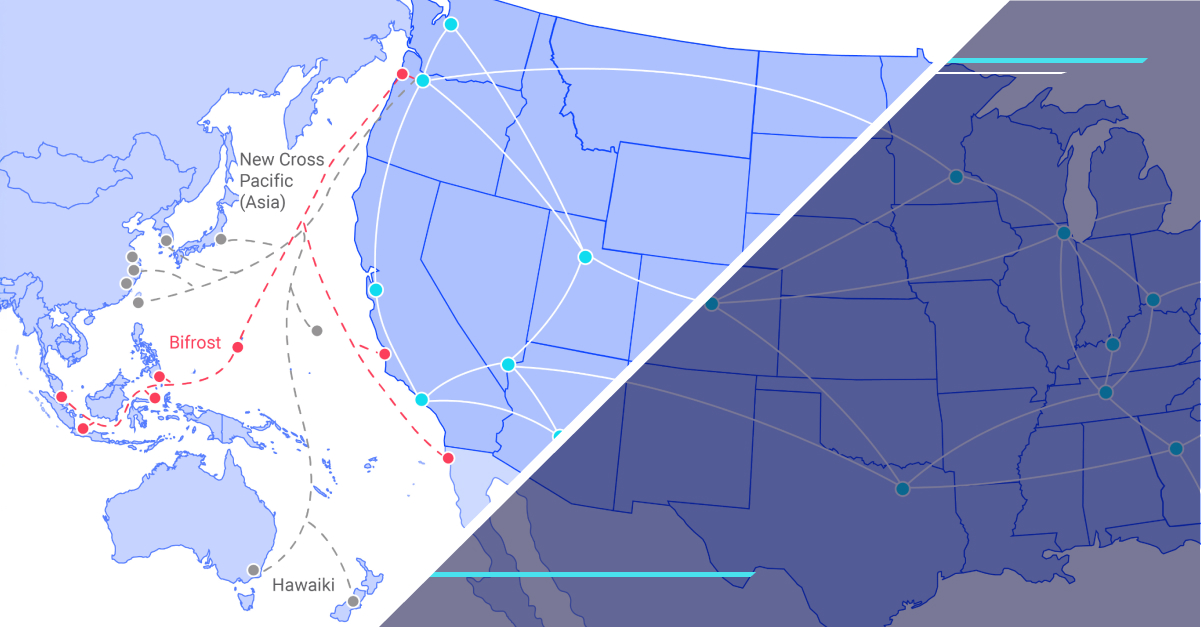Multicloud connectivity: Challenges and how to overcome them
Multicloud connectivity is no longer an experiment; it’s how most organizations run. Applications, data, and services are spread across AWS, Azure, Google Cloud, private clouds, and colocation facilities. This approach offers flexibility and resilience, but it also introduces real challenges. Latency between environments, inconsistent security models, mounting egress fees, and day-to-day operational complexity can slow you down instead of speeding innovation.

Addressing those issues starts with understanding the connectivity options available. Different models, whether public internet, dedicated interconnects, or colocation-based approaches, come with trade-offs in performance, cost, and risk. We’ve outlined these in detail in our blog on evaluating multicloud solutions, but here we’ll focus on the bigger picture: the top challenges IT leaders face and the strategies to overcome them. The goal is to help you make multicloud work for your business without sacrificing performance, security, or control.
Top multicloud connectivity challenges
| Challenge | Impact on the business |
| Latency and interoperability | Slower application performance, inconsistent user experience, and difficulty integrating services across providers. |
| Security and compliance | Gaps in monitoring, inconsistent policies, and higher risk of regulatory violations or data exposure. |
| Cost management and egress fees | Rising, unpredictable cloud bills and difficulty understanding the true cost of multicloud operations. |
| Operational complexity and governance | More time spent on manual management, greater chance of errors, and reduced visibility across environments. |
Latency and interoperability across clouds
When workloads run across multiple clouds, latency becomes one of the biggest hurdles. Data often has to cross public networks, creating unpredictable performance. Even small delays can affect application responsiveness, user experience, or data synchronization between environments. On top of that, cloud providers don’t consistently make it easy to integrate services seamlessly, so teams end up stitching together APIs and tools that don’t always play nicely with one another. Without a well-planned connectivity model, interoperability issues multiply and latency compounds.
Security and compliance across providers
Each cloud provider offers its own security controls, monitoring tools, and compliance frameworks. Managing these in isolation can create blind spots, making it harder to prove compliance or enforce consistent policies across environments. Industries with strict regulations, like healthcare or finance, feel this pain acutely. If encryption standards or audit practices differ from one cloud to another, your overall security posture weakens, so centralizing security oversight is essential to reduce risk and ensure that compliance doesn’t slip through the cracks.
Cost management and egress fees
Moving data between clouds isn’t free, and egress fees can add up quickly, especially for data-intensive applications. What looks cost-effective in one provider’s pricing sheet can balloon into an expensive surprise once traffic starts flowing between platforms. Add in the overhead of managing multiple billing structures, and it becomes difficult to get a true picture of total cost. Without careful planning, multicloud strategies meant to deliver flexibility can turn into a financial drain.
Operational complexity and governance
Running multiple clouds increases complexity at every layer: provisioning resources, enforcing policies, monitoring performance, and troubleshooting issues. Teams often find themselves juggling different consoles, dashboards, and management frameworks, which slows down operations and increases the risk of error. Governance is also harder: decisions about workload placement, access control, and scaling policies need to span environments, not just individual platforms. Without strong governance, organizations risk inefficiency, security gaps, and loss of control.
Connectivity model options: pros and cons
Balancing risk, performance, and costs
No single connectivity model solves every multicloud challenge, so the right choice depends on your tolerance for risk, your performance requirements, and your budget. Public internet options may be inexpensive and easy to set up, but they leave you exposed to latency and security concerns. On the other end of the spectrum, private interconnects deliver speed and reliability but at a higher cost. Between those extremes, newer solutions like Network-as-a-Service (NaaS) and hybrid models that incorporate colocation give IT leaders more flexibility to balance trade-offs.
Public internet
The public internet remains the most common connectivity method because it’s simple, available everywhere, and affordable. But relying on the internet for multicloud connectivity exposes you to unpredictable latency, congestion, and potential security risks. Data traverses multiple hops and providers, which reduces visibility and control. For workloads with strict performance or compliance requirements, the public internet often isn’t sufficient on its own.
Pros: Low cost, quick setup, global reach
Cons: Variable performance, limited security, lack of control
Dedicated fiber/interconnect
Private connectivity between cloud providers or from your data center into the cloud offers far better performance and security than the public internet. Options like AWS Direct Connect or Azure ExpressRoute give organizations dedicated bandwidth and predictable latency. The trade-off is cost and the need for physical presence in locations where these services are available. For mission-critical workloads, however, dedicated interconnects are often worth the investment.
Pros: Consistent low latency, strong security, reliable bandwidth
Cons: Higher cost, limited geographic availability, longer provisioning times
Network-as-a-Service (NaaS)/SDN overview
NaaS and software-defined networking (SDN) approaches are gaining traction as flexible alternatives. These services let organizations “dial up” secure, private connectivity between clouds or data centers on demand. Instead of provisioning and managing physical circuits, you use a platform to orchestrate connections in near real time. NaaS reduces the complexity of managing multicloud networks and can optimize costs by scaling capacity up or down as needed.
Pros: On-demand scalability, simplified management, pay-as-you-go pricing
Cons: Still maturing, provider lock-in risk, variable performance depending on the platform
Hybrid and colocation networking models
Colocation facilities offer a unique advantage: they serve as neutral hubs where organizations can connect directly to multiple cloud providers. By placing infrastructure in a colocation data center, you can establish private interconnects to AWS, Azure, Google Cloud, and others from one location. This hybrid approach reduces reliance on the public internet, lowers egress fees, and centralizes governance. For enterprises with diverse workloads, colocation creates a multicloud “meeting place” that balances performance, cost, and control.
Pros: Direct access to multiple providers, cost savings on data transfer, centralized control
Cons: Requires colocation presence, added complexity in managing hybrid infrastructure
Best practices to optimize multicloud connectivity
- Centralized governance and policy control: Managing multiple providers separately leads to inconsistent policies and unnecessary risk. Centralizing governance gives you a single source of truth for access control, compliance enforcement, and workload placement. This doesn’t mean replacing every provider’s tools; rather, it means layering policies and controls that work across them. A clear governance framework makes it easier to enforce security standards, align with regulatory requirements, and maintain visibility into who has access to what, regardless of where workloads live. Governance is also a critical piece of a broader cloud strategy, helping IT teams keep policies consistent even as environments grow more complex.
3 things to prioritize in your governance framework
- Consistent access policies across all cloud providers to reduce risk.
- Unified compliance controls that meet industry regulations without duplication of effort.
- Clear visibility and reporting so IT leaders always know who has access, where workloads are running, and how data is secured.
- Monitoring, analytics, and performance optimization: You can’t improve what you can’t measure. A multicloud environment generates a massive amount of network and application data, and without consolidated monitoring, it’s easy to miss performance bottlenecks or anomalous traffic patterns. Unified analytics platforms help IT teams spot latency spikes, track egress usage, and identify underutilized resources. With real-time monitoring and historical trend analysis, you can tune connectivity models to ensure consistent performance while also optimizing costs. These capabilities are increasingly built into modern business connectivity solutions, which tie network visibility directly to business outcomes.
- Vendor/vendor-agnostic orchestration tools: Every cloud provider promotes its own orchestration and management stack. While those tools are useful within a single environment, they rarely extend across platforms. Relying on them alone can lock you into one ecosystem. Instead, consider orchestration tools that are vendor-agnostic, giving you a unified way to automate provisioning, enforce policies, and scale resources across multiple clouds. This flexibility reduces dependence on any single provider and ensures you can adjust your strategy as business needs evolve. Many enterprises use facilities as a neutral colocation services provider, enabling direct, vendor-agnostic interconnection to multiple clouds while keeping orchestration flexible.
Avoiding pitfalls: Guidance for IT leaders
Pro tip: 91% of organizations report waste in their cloud spend due to overprovisioning, idle resources, and a skills gap, highlighting the need for disciplined governance and cost oversight.
Over-provisioning vs. on-demand scaling
A common misstep in multicloud deployments is over-provisioning resources “just in case.” While this may feel like a safeguard, it often results in wasted spend and underutilized capacity. On the other hand, relying solely on on-demand scaling without guardrails can create cost unpredictability when workloads spike. The most effective approach blends both strategies: reserve capacity for predictable workloads while using elastic scaling to handle surges. This balance helps maintain performance without overspending.
Multi-vendor lock-in vs. flexibility
One of the main reasons organizations adopt multicloud is to avoid being locked into a single vendor. But ironically, it’s easy to fall into lock-in again if you rely too heavily on proprietary tools or interconnects from any one provider. The solution is to favor vendor-neutral platforms and connectivity models that give you the option to pivot as business needs change. Colocation hubs and cloud interconnect services are particularly effective in maintaining this flexibility.
Balancing cost, control, and performance
Optimizing multicloud isn’t about choosing one priority over the others; it’s about striking the right balance. Cutting costs without regard for performance creates bottlenecks. Prioritizing control without considering efficiency slows innovation. And chasing maximum performance at any price leads to unsustainable budgets. IT leaders need a framework that weighs all three factors and applies the right connectivity model for each workload. Clear governance, careful workload placement, and ongoing monitoring make it possible to balance cost, control, and performance without compromise.
Key takeaways on multicloud connectivity
- Plan for cost visibility: Monitor egress fees and resource usage to avoid financial surprises.
- Standardize governance: Enforce consistent security, access, and compliance policies across providers.
- Use vendor-neutral tools: Keep flexibility by avoiding lock-in to a single provider’s ecosystem.
- Match connectivity models to workloads: Balance cost, performance, and control based on specific application needs.
Next steps
Multicloud doesn’t have to mean complexity. With the right connectivity strategy, you can keep costs predictable, performance steady, and governance under control. Explore our connectivity solutions and contact us to see how we can help you build a multicloud environment that delivers on its promise.
Multicloud connectivity FAQs
What is multicloud connectivity?
It’s the ability to link workloads, applications, and data across multiple cloud providers so they operate as one cohesive environment.
What are the main challenges of multicloud connectivity?
Latency, security and compliance gaps, unpredictable costs, and operational complexity are the most common pain points.
How can businesses reduce latency across multiple clouds?
Direct interconnects, colocation hubs, and optimized routing can minimize data travel over the public internet, reducing latency.
What connectivity options are available for multicloud networks?
Public internet, dedicated fiber, Network-as-a-Service, and hybrid/colocation networking each offer different trade-offs.
Why is centralized governance important in multicloud environments?
It ensures consistent policies, simplifies compliance, and gives IT leaders greater control across providers.
How can I evaluate the right multicloud connectivity solution for my business?
Start by mapping workloads to performance, cost, and compliance needs, then compare models.






